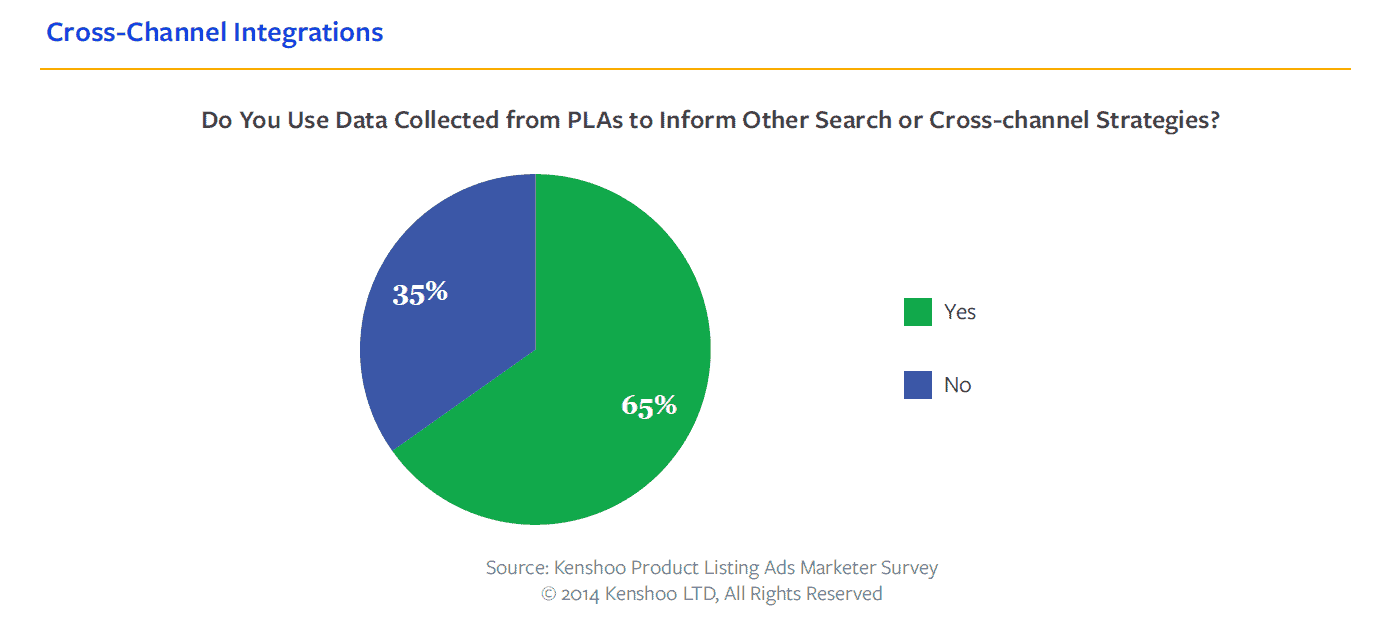Google Product Listing Ads (PLA) have opened up a world of opportunity — specifically to retailers — to drive traffic and conversions via this engaging, product-focused ad format. Search marketers are trying to keep pace with the updates in PLA features and functionality as the offering has evolved in the past few years, and are gaining insights, best practices, and tips along the way.
Retailers, hope you didn’t get too comfortable because Google recently announced another update — PLA campaigns will sunset in August 2014, and be replaced by a new campaign type, Shopping campaigns. While the PLA ad type will maintain the same format and functionality, the campaign structure and maintenance of PLAs will change. But, don’t worry, Shopping campaigns offer improvements to streamline the process and create more intuitive PLA management.
According to eMarketer, 61% of marketing professionals worldwide see testing and optimizing PPC campaigns as the most effective search marketing tactic. In the same vein, it will be important for marketers to take a test and learn approach to Shopping campaigns, as done in the past, to allow them to uncover insights specific to the new campaign type and formulate new best practices.
Although the Skai team is well-versed in Product Listing Ads, we wanted to dive a little deeper and gain some insight from the greater search marketing community by getting their perspective on PLAs and the latest updates to Google Shopping campaigns. In our recent report, An Inside Look At Google Shopping Campaigns, we share results from a survey of global search marketers that paint a picture of how PLAs are being accepted, used, and perceived in the marketplace along with real-life examples of performance, tips, and best practices from our clients.
As illustrated in the chart below, of the 89 survey respondents, 83% found PLA performance to be on par or better than traditional text ads. The effectiveness of PLAs stems from engaging images and relevant product information, peaking consumers’ interest and drawing them in.
This positive sentiment towards PLAs was echoed in many of our client responses, expressing the “high ROAS” and “incremental lift” that the format drives. Joe Askew, CSE Specialist at iProspect noted that “PLAs present a robust opportunity for advertisers, especially when run in collaboration with and used to inform other programs and channels such as paid search, dynamic retargeting, and affiliate programs”.
The majority of our survey respondents agree with Joe’s insight, with about ⅔ of marketers using PLA data to inform other strategies, as shown in the chart above. Search marketers have embraced PLAs, and are using this format to drive consumer engagement as well as inform other marketing decisions and develop a cross-channel digital marketing strategy.
As with any offering, Google’s Product Listing Ads are constantly evolving to optimize performance and keep up with searchers’ needs. With the migration to Google Shopping campaigns coming, marketers need to plan ahead and prepare for the changes in order to be ahead of the curve.
Marketers seem to be accepting this shift to Shopping campaigns with open arms. One respondent shared that “Shopping campaigns will give merchants a more granular look into their PLA data and will be able to better optimize to meet brand goals”. Many other marketers agreed, highlighting Shopping Campaigns’ “streamlined setup”, “advanced reporting capabilities” and “ease of optimization”.
With time, we’ll be able to see the true impact Shopping campaigns have on overall PLA efforts.
To view Skai’s Google Shopping research and analysis, along with marketer insights and tips, download An Inside Look at Google Shopping Campaigns in full.


